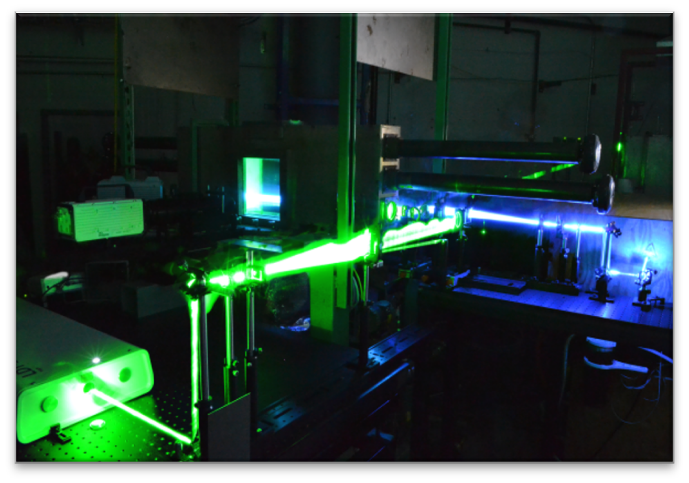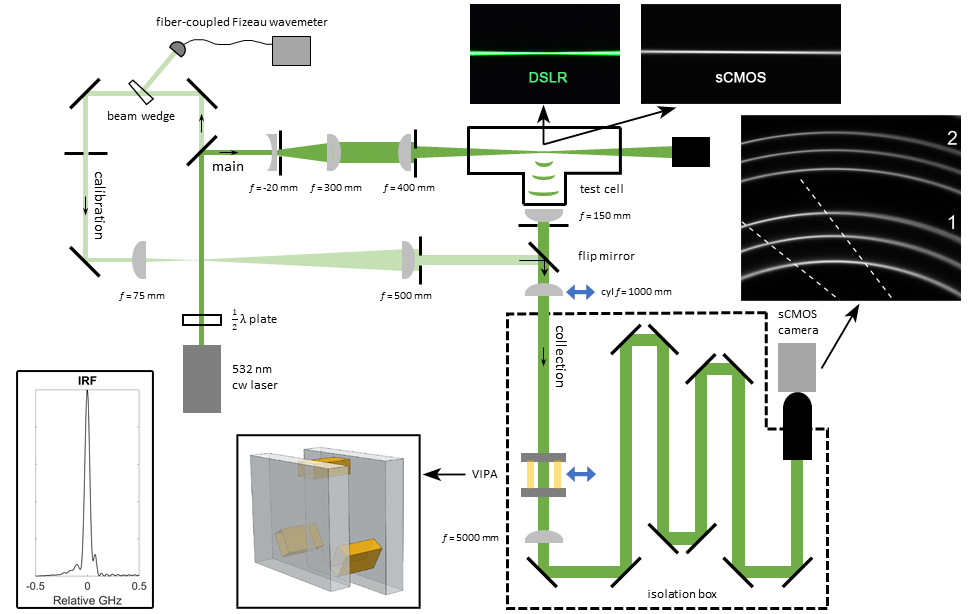
The true nature of combustion phenomenon is often concealed behind pressure vessel walls or the complex geometry of a gas turbine combustor. A combustor’s perforated walls, quench jets and swirling flow from fuel nozzles create an almost intractable problem of multidimensional, multiphase, non-equilibrium flow which still challenges the minds of the world’s best engineers and scientists who are working to make the worlds engines more efficient and economical.
The legacy measurements in combustion were often obtained with physical probes and while they are still used in some situations, they are naturally intrusive causing changes in the flow character (either physically or chemically). Additionally probes often suffer from a combination of poor spatial or temporal resolution and in some cases have short lifetimes due to harsh conditions. In the combustion diagnostics research group at the Ben T. Zinn Lab we go to great lengths to engineer test articles/combustors to enable the use of light that emanates naturally from chemiluminescence, or that resulting from directed laser beams and sheets, to interrogate the internal workings of combustion systems.
An array of techniques (some simultaneously) are deployed measure aspects of the flow; often new challenges presented by industry and government require us to develop new techniques. Many of the techniques use pulsed lasers and high-resolution imaging systems which effectively "freeze" the flow physics at an instant in time. Moreover, many of these pulsed laser techniques can be repeated at kilohertz (or even megahertz) rates, where the data reveal a flow’s time evolution. Some diagnostics techniques commonly used in the lab include:
- Particle Image Velocimetry (PIV) -- including stereoscopic PIV and tomographic PIV -- to measure velocity fields.
- Planar Laser Induced Fluorescence (PLIF) of various minor chemical species (either seeded or naturally occurring) to measure their distribution in the flow (multiple laser transitions can be used simultaneously to yield rotational or vibrational temperature in some situations).
- Rayleigh scattering -- including Filtered Rayleigh Scattering (FRS) -- to measure number density, mixing, and temperature.
- Raman scattering to measure various major chemical species.
- Laser induced phosphorescence thermometry to measure gas and surface temperatures.
- Laser absorption spectroscopy (LAS) – to measure species temperature and concentration averaged along a line-of-sight. Tomographic LAS –expands the acquired data set to a 3-dimensional field.
- Various forms of holography to measure multi-phase flows.
- Laser Induced Incandescence (LII) to measure particulate size and spatial distribution.
- Terahertz time domain spectroscopy and Thomson scattering to measure plasma properties.
- Laser Doppler and Phase Doppler Anemometry (LDA & PDA) to measure pointwise droplet size and velocity distributions.
- Various forms of interferometry to measure thermodynamic and optical properties.
- Chemiluminescence measurements with Abel or tomographic inversions to indicate zones of reaction or heat release.
In addition to these diagnostics, the lab is equipped with an extensive suite of probe-based measurements to measure temperature, sample exhaust gases and particulates, and to acoustically force air or fuel to quantitatively measure a combustor’s response.
Ongoing research on combustion diagnostics aims to expand measurement capabilities to new quantities and/or conditions of interest, such as higher pressures or those evolving from experimental fuels such as ammonia. For example, the figure below shows a unique system that was designed and built to study elastic light scattering from high-pressure gases, which is necessary to transition FRS to aerospace-relevant systems.

Research groups working in this area:
- Prof. Ellen Mazumdar
- Prof. Adam Steinberg
